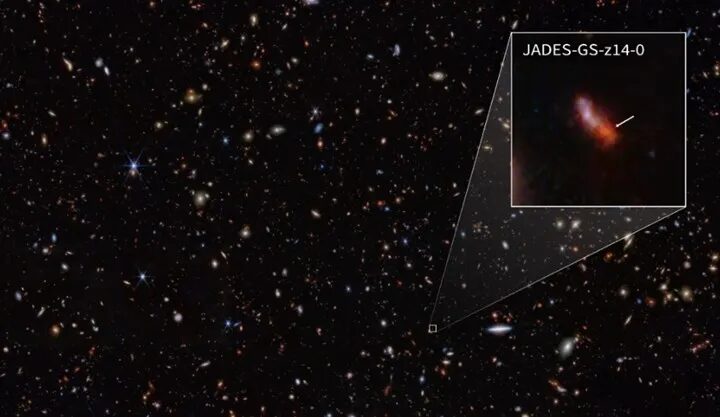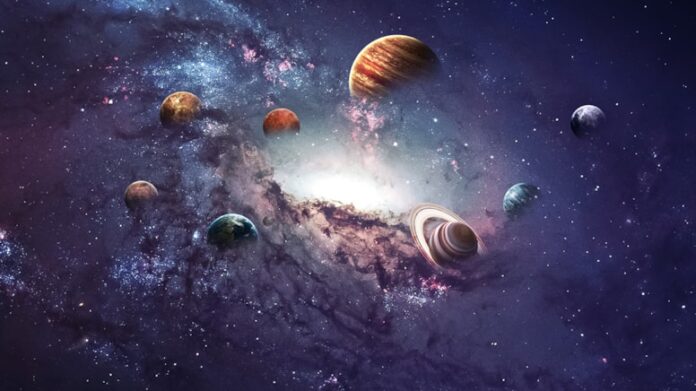NASA’s James Webb Space Telescope (JWST) has discovered the most distant galaxy ever observed. Named JADES-GS-z14-0, this galaxy was found to have formed just 290 million years after the Big Bang. This discovery provides significant insights into the early universe and has generated great excitement in the astronomical community.
A Large and Luminous Galaxy in the Early Universe
Researchers have identified that JADES-GS-z14-0 is approximately 1,600 light-years in diameter and is incredibly large and luminous. Given that it formed shortly after the Big Bang, its brightness is particularly surprising. This suggests the presence of numerous ancient and massive stars within the galaxy.

Star Formation and the Presence of Oxygen
The light wavelengths emitted by JADES-GS-z14-0, detected by the Mid-Infrared Instrument (MIRI) on the James Webb Space Telescope, indicate strong ionized gas emissions likely caused by abundant hydrogen and oxygen. The presence of oxygen in such an early stage of the galaxy’s life is unexpected. This suggests that multiple generations of massive stars had already existed by the time we observe this galaxy.
Observing the Past
Observing distant objects in space is akin to looking back in time. Therefore, the light we see from JADES-GS-z14-0 shows the galaxy as it was 290 million years after the Big Bang. This implies that the galaxy had already produced numerous generations of massive stars by this time. While star formation takes approximately 10 million years, their lifespans can extend up to 20 billion years, although massive stars typically have much shorter lifespans. This discovery doesn’t completely alter our understanding of the universe but prompts us to reconsider the nature of star formation in the early universe.

Potential for Finding Even Older and Brighter Galaxies
Researchers suggest that JADES-GS-z14-0 doesn’t fit the types of galaxies predicted by theoretical models and computer simulations for the early universe. They anticipate that over the next decade, the James Webb Space Telescope will likely discover more of these bright galaxies from even earlier periods.
Continued Discoveries by the James Webb Space Telescope
The James Webb Space Telescope continues to transform our understanding of the universe. Previously, it revealed star formation in the Virgo constellation, detected water around a comet, and identified carbon dioxide in a distant exoplanet. The scientific community eagerly anticipates the discoveries JWST will make in the coming years.
The recent discovery of JADES-GS-z14-0 by the James Webb Space Telescope offers new and crucial insights into the early stages of the universe. Such findings enhance our comprehension of the universe’s formation and evolution.

